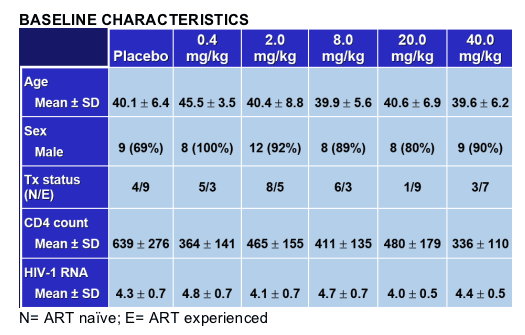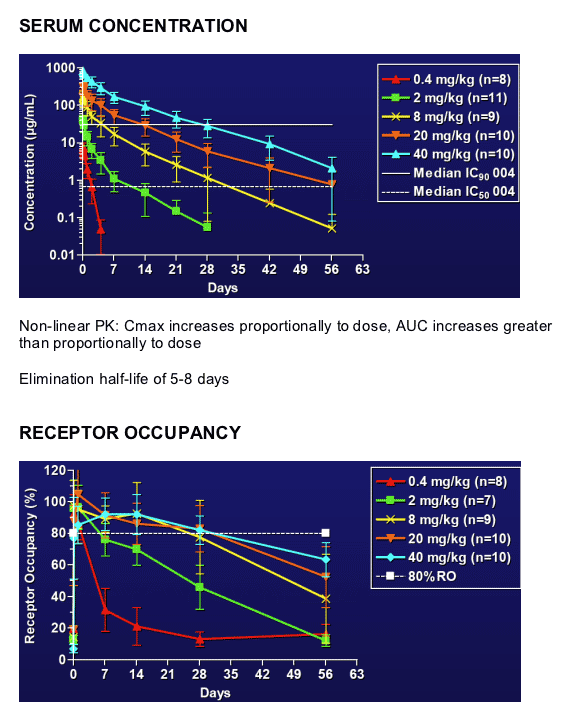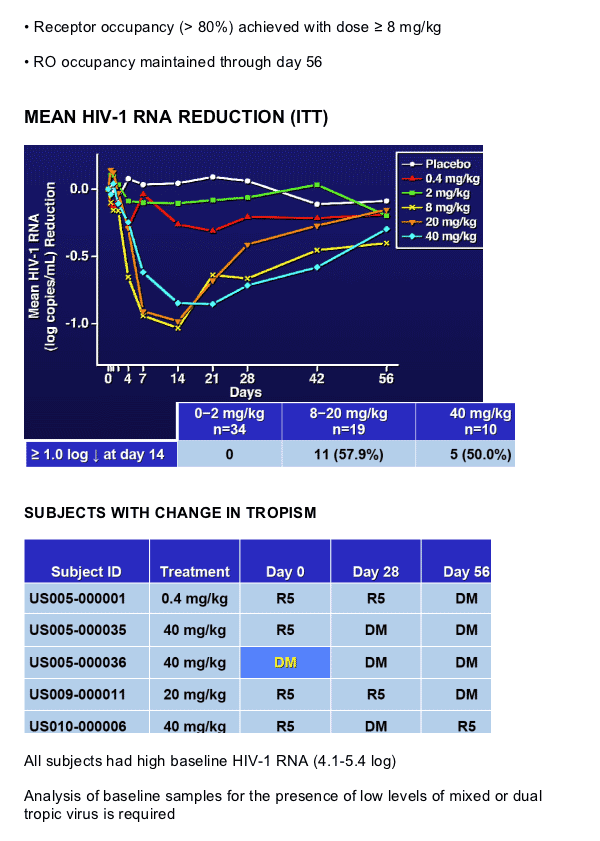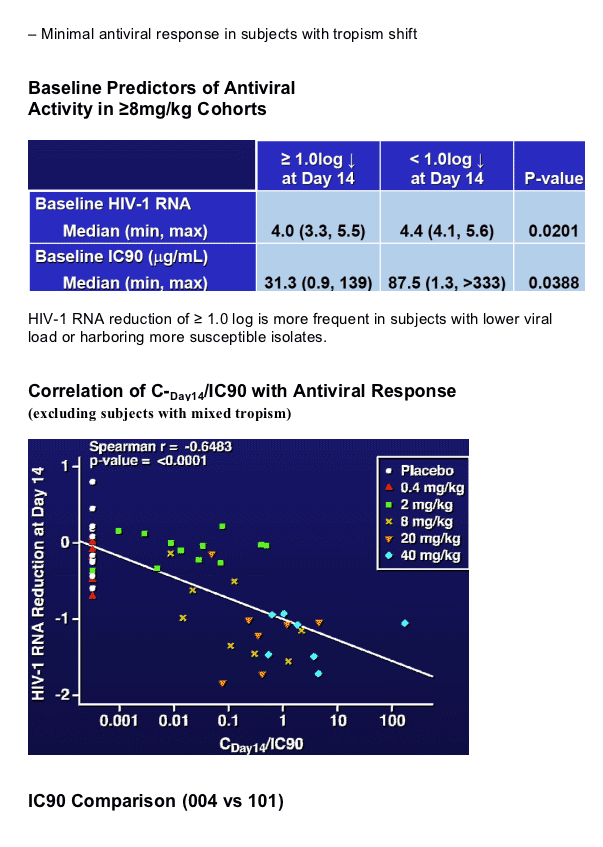 |
 |
 |
| |
New CCR5 Drug HGS004 Study Results
|
| |
| |
Reported by Jules Levin
ICAAC, Sept 27-30, 2006, San Francisco
"A Phase 1, escalation, placebo controlled study of a fully human monoclonal antibody against CCR5 (HGS004) in patients with CCR5 tropic HIV-1 infection"
J Lalezari, M Lederman, G Yadavalli, M Para, G Richmond, E DeJesus, J Searle, W Cai, V Roschke, J Zhong, C Hicks, W Freimuth, M Subramanian
CCR5 mAb (HGS004)
Fully human IgG4 against CCR5
In vitro characterization (Roschke et al, ICAAC 2003):
- Robust antiviral activity against a broad spectrum of R5 tropic HIV-1 isolates including T-20 resistant virus
- Lack of resistance (to date) with >6 months culture/passage
- Potent inhibitor of chemokine (MIP-1_, MIP-1_ and RANTES) binding and chemotaxis
- Does not induce signaling through CCR5
Potent in-vitro synergy with currently approved antiretroviral agents (Giguel et al, CROI 2006)
AUTHOR CONCLUSIONS
Safe and well tolerated following administration of a single IV dose up to 40 mg/kg
Pharmacokinetics are non-linear with AUC increasing more than proportionally to dose
High levels of receptor occupancy are achieved through Day 28
Antiviral activity observed at doses ≥ 8 mg/kg
- PK (AUC and CDay14) and isolate sensitivity correlates with antiviral response
- Modeling indicates that HGS101 (5.5 fold more potent than HGS004) is likely to be highly effective
STUDY DESIGN
Double-blind, placebo controlled
Population: HIV+ (R5 tropic), CD4 > 250, HIV-1 RNA > 5000
- Treatment-naive
- Treatment-experienced and off therapy for 8 weeks
5 cohorts: 10 subjects per cohort (8 active, 2 placebo)
- Single injection (IV infusion), dose escalation
- 0.4, 2.0, 8, 20 and 40 mg/kg
- 56 day study
STUDY OBJECTIVES
- Safety and Tolerability
- Pharmacokinetics and Receptor occupancy
- Efficacy
- HIV-1 RNA reduction
- Change in tropism and isolate sensitivity

SAFETY & TOLERABILITY
No severe (grade 3-4) adverse events
2 treatment-related SAE's (moderate severity) of infusion-related urticarial rash in the 2.0 mg/kg cohort:
- Subsequent subjects were pre-treated with PO Diphenhydramine
- No instances of rash in the higher dose cohorts
No clinically significant laboratory abnormalities
(e.g., no grade 3 liver enzyme elevation)
Overall, the drug was well tolerated even at the highest dose of 40 mg/kg




|
| |
|
 |
 |
|
|